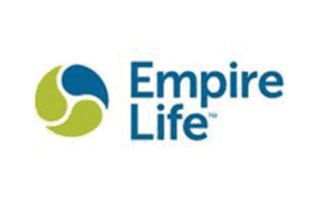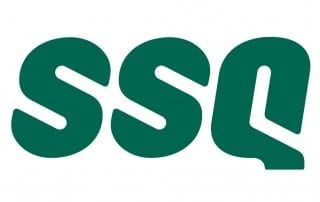Providing Leading Financial Advice

There are several insurance companies that provide Universal Life Insurance policies so it is worth investigating a few to make sure that the one selected is most suitable to meet your needs. In that respect, Partners in Wealth Solutions, who are independent financial advisors, can advise you on the most suitable policy from the extensive range of providers that they have access to.
There are numerous different types of life insurance so, let’s have a look at the features and benefits of Universal Life Insurance.
Universal Life Insurance is a permanent life insurance policy that will pay out a lump sum upon your death but also has an investment element to it.
Universal Life Insurance can be taken out on either a single life basis, joint first-to-die basis or joint last-to-die basis.
It is typically taken out to provide life coverage that can be used to provide a lump sum for your dependents to make their lives more comfortable when you are gone, to clear liabilities, pay for your funeral or can be used for estate planning.
The amount of life coverage is dictated by a number of factors such as your age, premium, occupation, whether or not you smoke, and overall health.
The insurance part can be set up in a variety of ways such as whether the amount of coverage remains constant throughout the term of the policy or whether the amount of coverage increases automatically each year to keep pace with inflation.
The investment part enables you to invest funds in a tax advantageous way in one or more of a variety of funds that have different risk strategies, although it should be noted that there are other forms of saving money that can be used such as RRSPs and TFSAs.
Your monthly premium is initially placed into the investment fund(s) you have selected and the cost of providing the life coverage is taken out of the fund each month. Anything left remains in the investment fund to, hopefully, grow or can be used to buy an increased amount of life coverage.
Also, there are a number of options with a Universal Life Insurance plan such as critical illness coverage.
As you can see, this is a complex type of policy with numerous permutations. This is why it is important that you choose the correct options. As stated earlier, you can discuss your circumstances with Partners in Wealth Solutions who have many years experience in advising clients about the Universal Life Insurance plan.

A Home Equity Line of Credit (HELOC) provides you with a flexible line of revolving credit against the security of your home. As a result, the cost of borrowing funds is much lower than most other similar forms of credit such as overdrafts and credit cards.
Your existing mortgage lender can usually provide you with a HELOC subject to you meeting their lending criteria. This can include your ability to meet the increased repayments and not exceeding the maximum % loan to valuation that was subject to change by the Office of the Superintendent of Financial Institutions (OSFI) in the Autumn of 2012.
As an example, let’s assume that your house is valued at $250,000 and you have a mortgage of $30,000. Over a period of time you may wish to buy an expensive car, fund your son’s private education and install an outdoor hot tub in your back garden. You estimate that the total cost of these things will be in the region of say $100,000. In fact you can use the funds for almost anything – as long as it is legal!
Your mortgage lender agrees and sets up a HELOC. One of the positive things about this lending scheme is that you only pay interest and make repayments on the amount you actually draw down of the sum you have agreed to borrow. So, if you first buy a car for $25,000 you will only be charged interest on the $25,000 plus of course the amount outstanding on the main part of the mortgage ($30,000) until you decide to borrow more on your line of credit.
It is not commonly known but the money from a HELOC can also be drawn down to then be invested. Obviously, if you had surplus savings, you would normally first look to use most of those otherwise, to all intents and purposes, you would be “borrowing your own money”.
However, if you do not have any savings you could use some of the money in your HELOC as long as you are aware of the possible risks associated with this way of investing. An example of when this may be a good option is if you have received some information to invest in some shares because they were possibly going to increase substantially and quickly in value so there was an opportunity to purchase these shares at price A and then sell them say three months later at price B for say a 30% increase in value.
In that particular instance, the 30% gain you have made will almost certainly have far exceeded the interest you will have had to pay on the amount you withdrew from the HELOC to buy the shares. Of course, there is absolutely no guarantee that you will achieve this sort of gain in a 3-month period or any other period for that matter – in fact the value of the shares could have dropped after you had bought them. Having sold the shares you can then repay the amount you borrowed from your HELOC and do what you like with the profit.
Partners in Wealth Solutions can not only provide you with expert and detailed advice about this form of investing but can also review your existing mortgage package to see if a more suitable one is available for you from the extensive panel of mortgage lenders that they use for their valued clients.

The RRSP (Registered Retirement Savings Plan), or RSP for short, is an effective investment product for planning for your retirement as it is an extremely tax efficient vehicle.
This is due to the fact that any growth within the fund is tax free providing your fund with the opportunity to grow more than if it were in a taxable savings or investment product. Tax relief is also provided on the contributions that you place in the RRSP.
Potentially, you only pay tax on the income you take out of the pension fund at retirement although the rate of tax for a lot of people may be lower than you paid when you were working.
The extremely wealthy and those in the fortunate but unusual position of being in receipt of more income in retirement than when they were working may find that their income is subject to a higher tax bracket than when they were in paid employment or running their own business.
So, is there anything that can be done to reduce your tax bill on the income taken from your Registered Retirement Savings Plan? Well, you will be pleased to hear that there is and the way of achieving this is using the RSP meltdown.
Here in Canada, any interest that has been charged on money that has been borrowed to then be invested is allowable as a tax deduction. The RSP meltdown system utilizes interest that is tax deductible to be set against income that is taxable from money withdrawn from an RRSP.
To demonstrate this, let’s assume that you have drawn down on a loan for $100,000 to then invest the money and you are being charged an interest rate of 5% by the lender – that is $5,000 per annum. As the borrowing has been arranged for the purpose of investing the funds, the interest of $5,000 can be written off against your tax bill.
So, if you decide to take out $5,000 per annum from your Registered Retirement Savings Plan that amount is taxable. However, the $5,000 interest that you paid on the loan can offset the $5,000 withdrawal from your RRSP resulting in a tax liability of $0.
This is a particular complex area of financial planning but you need look no further than contacting Partners in Wealth Solutions who have expert knowledge of the RSP meltdown techniques and will be able to provide you with the most suitable advice that will be tailor made to match your needs.

Segregated funds, like mutual funds, are market-based investments. A large pool of money belonging to many people is invested in stocks, bonds or other securities with the goal of increasing the value of the entire pool. However, because segregated fund contracts are insurance contracts, they have special benefits that mutual funds do not.
Segregated fund contracts guarantee 75% to 100% of your premiums (less withdrawals) when the contract matures, or on your death. Some segregated fund contracts also offer income guarantees.
Money invested in segregated funds contracts may also be protected against seizure by creditors. This can be a big advantage for business owners and professionals wanting to protect against an unexpected lawsuit or bankruptcy. Consult your tax and legal advisors for details.
Segregated fund contracts purchased with non-registered money let you name beneficiaries,
so the death benefit bypasses your estate and goes directly to them. You can also control how they get the benefit: as a lump sum or in the form of a payout annuity. Partners in Wealth Solutions, following a “know your client” review with you, will be able to advise you if this is the case and, if so, recommend a suitable segregated fund(s) from the extensive range of providers and funds available to meet your needs. In doing so they will take into account such things as the segregated fund returns with these providers and they will also consider any other investment products that may be as, or more, suitable when making their recommendations to you.
Trusted Product Providers
Partners in Wealth Solutions chooses only the very best product providers for our clients.












